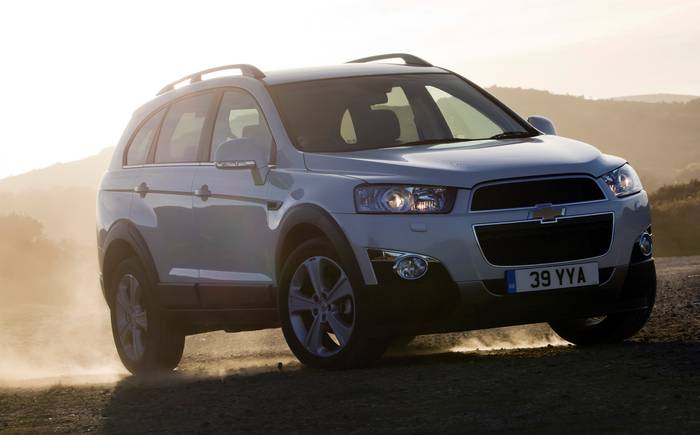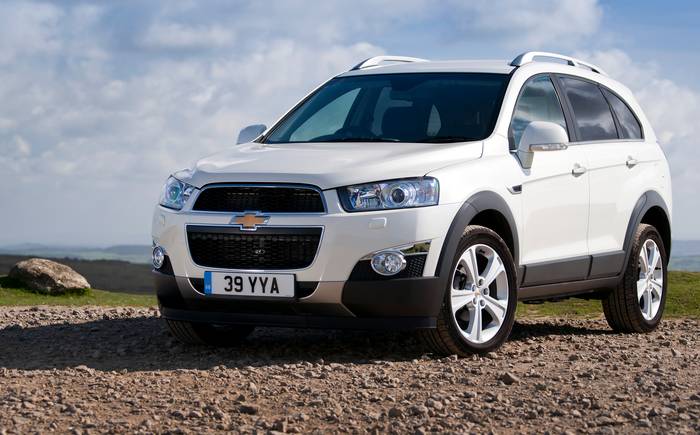Chevrolet Captiva review (2007-2015)
High in value and practicality
What is the Chevrolet Captiva?
The Chevrolet Captiva is a seven-seat SUV that’s so far below the radar, it’s almost subterranean. Don’t feel bad, then, if you haven’t heard of it. Chevrolet is now General Motors’ budget brand in Britain, but with lots of standard kit, ample space and greater comfort than some better-known rivals offer, the Captiva is worth a look. Just don’t expect ingratiating remarks from the neighbours when they see a Captiva on your drive — even if it is a more imaginative choice of seven-seat 4×4 than the Kia Sorento, Citroën C-Crosser, Volvo XC90 and their ilk.
Search for and buy a used Chevrolet Captiva
The Captiva made its debut as the S3X concept at the Paris motor show in September 2004, and the production car eventually reached showrooms in July 2006. Engine choices were a 150bhp 2-litre diesel and a 140bhp 2.4-litre petrol, but in summer 2008 the 2.0 VCDi LS arrived, powered by a 161bhp diesel engine that feels quite muscular and has been tuned in some later high-spec Captivas to 182bhp.
While all Captivas are decently kitted out, the range-topping LTZ that arrived in May 2010 should be your goal, as it has standard leather trim, heated front seats, privacy glass, parking sensors and a reversing camera. Bear in mind that not all Captivas have four-wheel drive, despite the off-roader looks, and not all have the full seven seats.
Predictably, it’s only diesel power that you should entertain with one of these Chevrolets, and not only because the petrol models are all six-speed manual. Automatic transmission significantly increases the diesel consumption (from 44.1mpg in the combined cycle to 35.7mpg) and CO2 emissions naturally follow suit (170g/km against 208g/km).

Off road the Captiva doesn’t particularly impress, and it isn’t as much fun on the road as some of its better-known rivals, but other than that it’s pretty much all good news. The Captiva’s greatest appeal is its value for money: an almost complete lack of consumer awareness has created little demand for it on the used-car market, and that is reflected in the asking price. While the Captiva does not excel in any one area, as a keenly priced all-rounder it is certainly good enough to deserve attention.
What to look out for when buying a Chevrolet Captiva
The Captiva is no stranger to premature clutch and brake disc failure, and its trip computer is notoriously inaccurate, particularly over fuel consumption. There have been instances of the electronic stability program cutting in for no apparent reason, causing poor throttle response; the usual fix is a software update.
Reassuringly, there have been been only two recalls of the Captiva. The first, which concerns potential failure of the steering system, affects the earliest cars built; the second, related to possible brake failure, affects recently built cars.
The One to Buy
Chevrolet Captiva 2.2 VCDi LTX
Specifications
- Engine:
- 2231cc, 4 cylinders
- Power:
- 182bhp @ 3800rpm
- Torque:
- 295 lb ft @ 2000rpm
- Transmission:
- 6-speed manual
- Acceleration:
- 0-62mph in 9.9sec
- Top Speed:
- 124mph
- Fuel
- 44.1mpg (combined)
- CO2:
- 170g/km
- Road Tax Band:
- H
- Dimensions:
- L 4635mm, W 1850mm, H 1755mm
Chevrolet Captiva rivals
Hyundai Santa Fe (click here for used prices on driving.co.uk)
Kia Sorento (click here for used prices on driving.co.uk)
Mitsubishi Outlander (click here for used prices on driving.co.uk)





